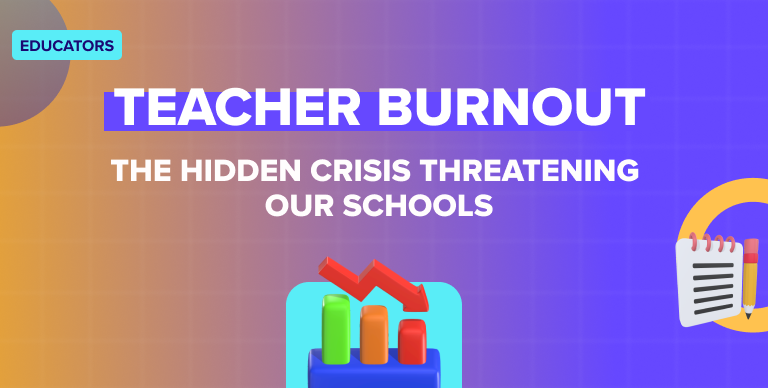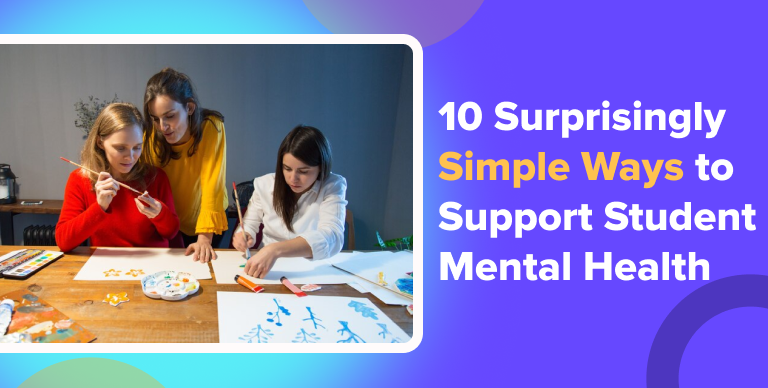Teacher burnout isn’t just a buzzword—it’s a serious issue quietly eroding the foundation of our education system. While students are the focus of our educational efforts, the well-being of their teachers often gets overlooked. The reality is, when teachers burn out, the entire classroom suffers. This hidden crisis, fueled by overwhelming demands, lack of support, and relentless pressure, is driving some of our best educators away from the profession. The consequences? A ripple effect that impacts not just teachers, but students and the future of education as a whole.
Why Are Teachers Burning Out?
Imagine trying to juggle flaming torches while riding a unicycle on a tightrope—that’s what teaching feels like for many educators today. The expectations are high: teachers are expected to deliver engaging lessons, manage diverse classrooms, provide emotional support, and meet ever-changing academic standards. All this, often with limited resources and support.
The pressure doesn’t stop when the school bell rings. Teachers take work home, spending their evenings and weekends grading papers, planning lessons, and worrying about their students. This relentless cycle of work leaves little time for rest, leading to chronic stress, emotional exhaustion, and eventually, burnout.
The Personal Toll on Teachers
For teachers, burnout is more than just feeling tired—it’s a complete depletion of energy and passion. They start to feel like they’re running on empty, day in and day out. This exhaustion isn’t just physical; it’s emotional and mental. Teachers may find themselves feeling anxious, depressed, or disconnected from the very job they once loved. Over time, this can lead to a sense of hopelessness, where even the smallest tasks feel insurmountable.
But the effects of burnout don’t end with feelings of fatigue or frustration. Many burned-out teachers start questioning their career choice, and for some, the only solution is to leave the profession altogether. This isn’t just a loss for the individual teacher—it’s a loss for the students, the school, and the entire community.
How Burnout Hurts Students
The impact of teacher burnout on students is significant. When a teacher is burned out, they simply can’t give their best in the classroom. Lessons may lack creativity, enthusiasm may wane, and students may not receive the individualized attention they need. Over time, this can lead to lower academic achievement, disengagement, and a negative attitude toward learning.
Moreover, a stressed teacher can unintentionally create a tense classroom atmosphere. Instead of being a place of curiosity and growth, the classroom can become a space where both teachers and students feel disconnected and uninspired. For students, this can translate into a lack of motivation, poor performance, and even behavioral issues.
The Bigger Picture: What Burnout Means for Education
Teacher burnout isn’t just a personal issue—it’s a systemic one with far-reaching consequences. As more teachers leave the profession, schools face a growing shortage of qualified educators. This shortage is especially acute in low-income and rural areas, where it’s already challenging to attract and retain teachers.
The constant turnover of teachers disrupts the learning process, leading to inconsistency and instability in the classroom. Schools may be forced to fill vacancies with less experienced or even unqualified individuals, further eroding the quality of education. This decline doesn’t just affect current students; it threatens the future of our entire education system and the society that depends on it.
What Can Be Done?
Addressing teacher burnout isn’t just about helping individual teachers—it’s about safeguarding the future of education. Schools need to take proactive steps to support their teachers by reducing workloads, providing adequate resources, and creating a collaborative work environment. Professional development in stress management and self-care can also equip teachers with the tools they need to thrive, not just survive.
On a broader scale, governments and policymakers must invest in the education system. This means ensuring that schools have the funding to hire enough staff, reduce class sizes, and pay teachers what they deserve. When teachers are supported, they can focus on what they do best: inspiring and educating the next generation.
The Bottom Line
Teacher burnout is a crisis that we can no longer afford to ignore. It’s time to shift the focus from just keeping classrooms full to ensuring that those classrooms are led by passionate, energized, and supported educators. By addressing the root causes of burnout, we can create a more sustainable and fulfilling teaching profession—one that benefits not just teachers, but students and society as a whole.





